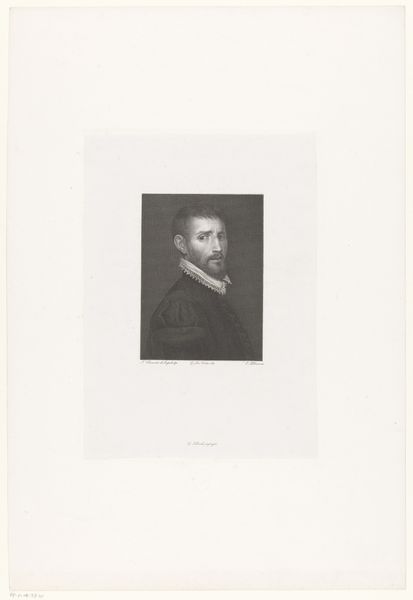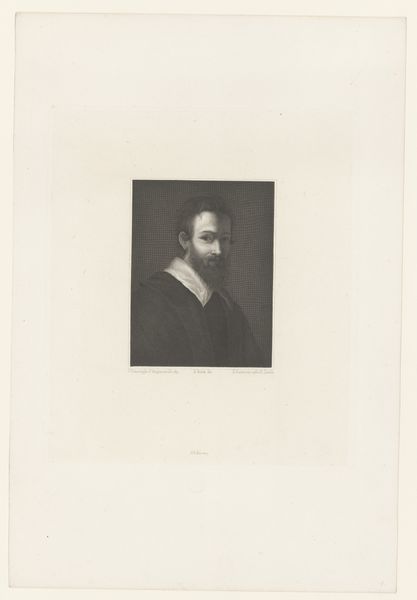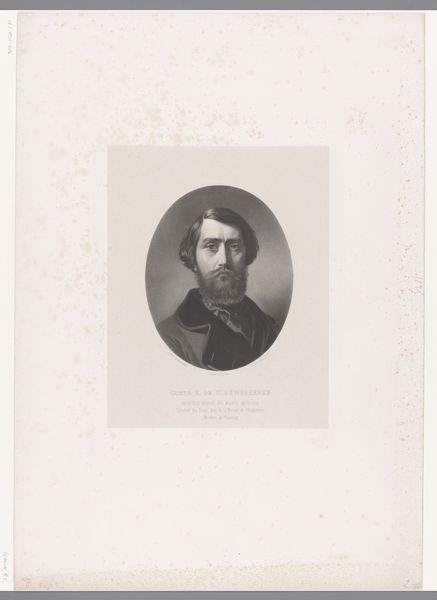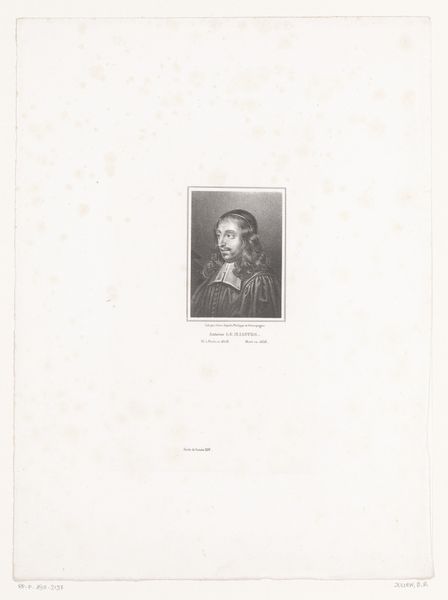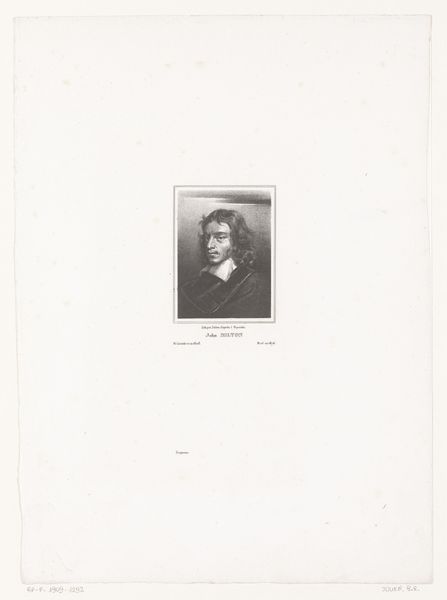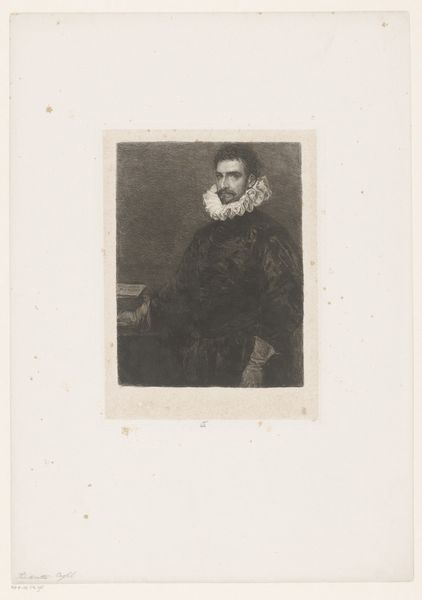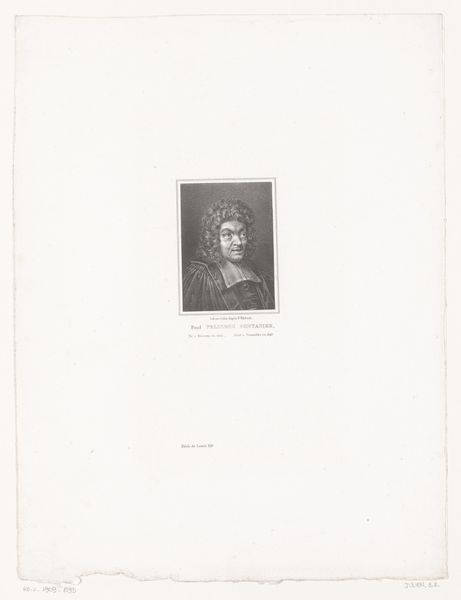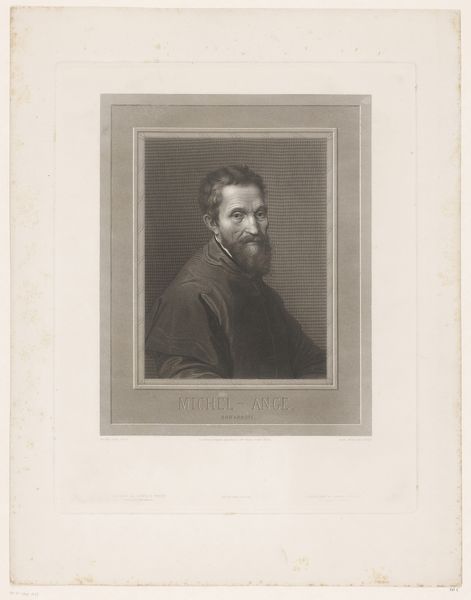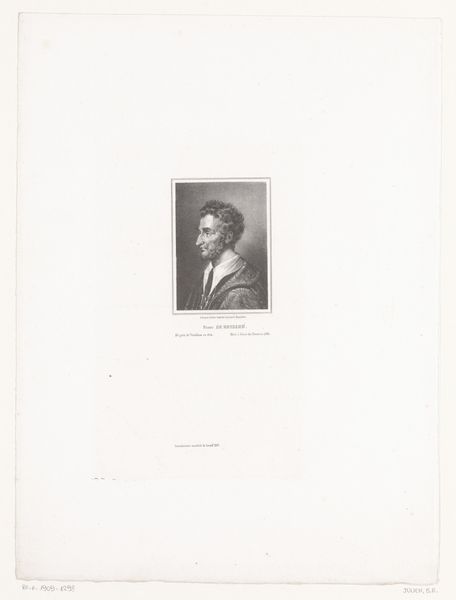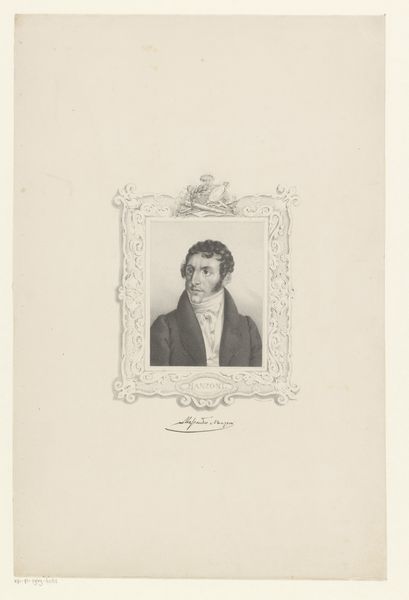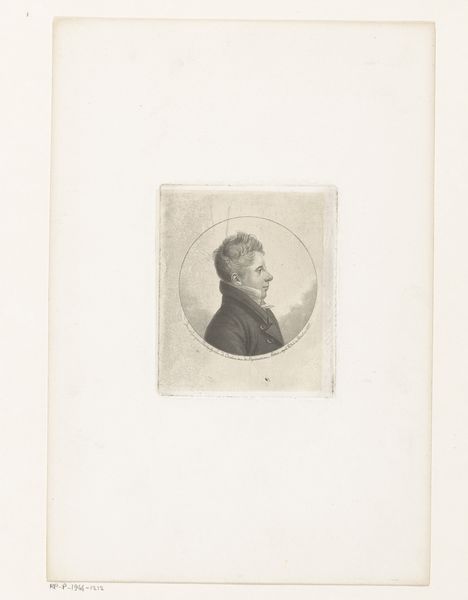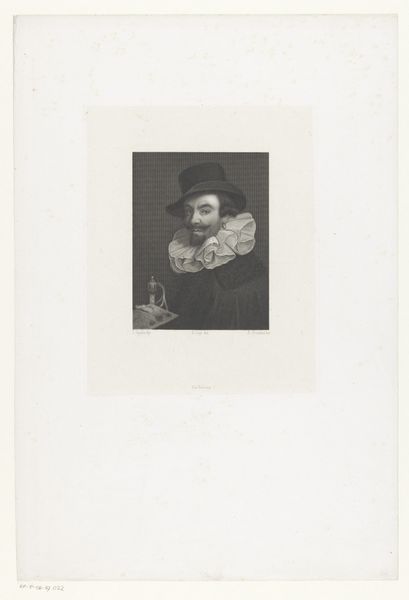
print, paper, engraving
#
portrait
# print
#
paper
#
engraving
#
realism
Dimensions: height 198 mm, width 155 mm
Copyright: Rijks Museum: Open Domain
Curator: Here we have "Portret van Giorgione," a print by Jean-Baptiste Meunier, dating somewhere between 1831 and 1900. It's rendered on paper using the engraving technique. Editor: There’s an immediate sense of intimacy here. The gaze of the subject is captivating, holding the viewer within the somber grayscale tonality of the piece. Curator: Indeed. The artist uses the very precise medium of engraving to capture what seems to be a likeness, adopting the stylistic conventions of realism, of course. I’m particularly drawn to the contrast; it accentuates the form and adds a layer of emotional complexity. The controlled gradations achieved via engraving really enhance the dimensionality of his form. Editor: Agreed, but let’s not ignore the physicality of the engraving process itself. Imagine the artisan, bent over the plate, meticulously cutting lines into the metal to render a face of flesh and blood. There is real labor embedded within each score, not merely in the duplication of a face, but the production of an image as a whole. What are the social conditions of such repetitive labor? Curator: Interesting angle, the manual labor of reproduction. However, doesn't focusing on that labor ultimately distract us from considering the intended symbolic representation—in this instance, of Giorgione himself, even if mediated? What does the face tell us? What narrative is constructed? Editor: It seems my eye wanders towards the process itself, especially the textures and how the repetitive nature of the mark-making creates the image and aura we are drawn to, while yours is locked on representation. Even as an interpretation, what do we have in this supposed depiction of Giorgione except ink on paper and another name recycled for posterity's sake? What about the paper’s sourcing, processing, and production? These details give us insight into broader systems of value extraction. Curator: I suppose we're both seeking to reveal deeper layers. I was so captivated by the interplay of light and shadow, the expressiveness achieved by the meticulous engraving… and, to see this reproduced, in printmaking, does somehow change the art’s perception over time, I concede. Editor: Precisely. Now consider where this artwork resides within its own industrial age; where this object may function as either decor or commodity... Curator: Well, it’s certainly given me food for thought today. Thanks for that fresh look at Meunier's portrait, focusing as it does, on the very tangible essence of its creation and material condition. Editor: The pleasure was mine, to highlight where the art resides; not merely as something we perceive, but as a reflection of societal structures.
Comments
No comments
Be the first to comment and join the conversation on the ultimate creative platform.
